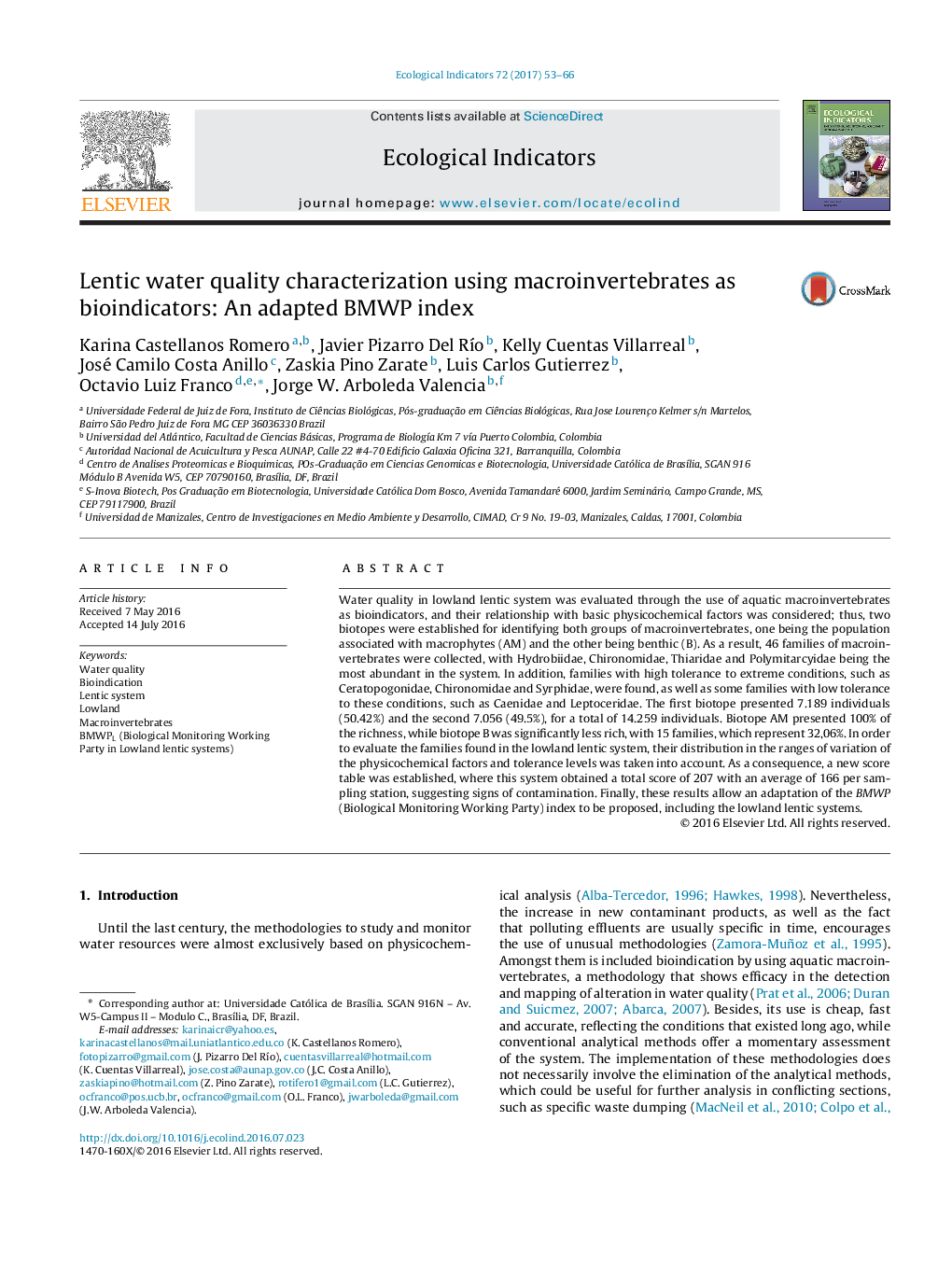| Article ID | Journal | Published Year | Pages | File Type |
|---|---|---|---|---|
| 6292714 | Ecological Indicators | 2017 | 14 Pages |
Abstract
Water quality in lowland lentic system was evaluated through the use of aquatic macroinvertebrates as bioindicators, and their relationship with basic physicochemical factors was considered; thus, two biotopes were established for identifying both groups of macroinvertebrates, one being the population associated with macrophytes (AM) and the other being benthic (B). As a result, 46 families of macroinvertebrates were collected, with Hydrobiidae, Chironomidae, Thiaridae and Polymitarcyidae being the most abundant in the system. In addition, families with high tolerance to extreme conditions, such as Ceratopogonidae, Chironomidae and Syrphidae, were found, as well as some families with low tolerance to these conditions, such as Caenidae and Leptoceridae. The first biotope presented 7.189 individuals (50.42%) and the second 7.056 (49.5%), for a total of 14.259 individuals. Biotope AM presented 100% of the richness, while biotope B was significantly less rich, with 15 families, which represent 32,06%. In order to evaluate the families found in the lowland lentic system, their distribution in the ranges of variation of the physicochemical factors and tolerance levels was taken into account. As a consequence, a new score table was established, where this system obtained a total score of 207 with an average of 166 per sampling station, suggesting signs of contamination. Finally, these results allow an adaptation of the BMWP (Biological Monitoring Working Party) index to be proposed, including the lowland lentic systems.
Related Topics
Life Sciences
Agricultural and Biological Sciences
Ecology, Evolution, Behavior and Systematics
Authors
Karina Castellanos Romero, Javier Pizarro Del RÃo, Kelly Cuentas Villarreal, José Camilo Costa Anillo, Zaskia Pino Zarate, Luis Carlos Gutierrez, Octavio Luiz Franco, Jorge W. Arboleda Valencia,
